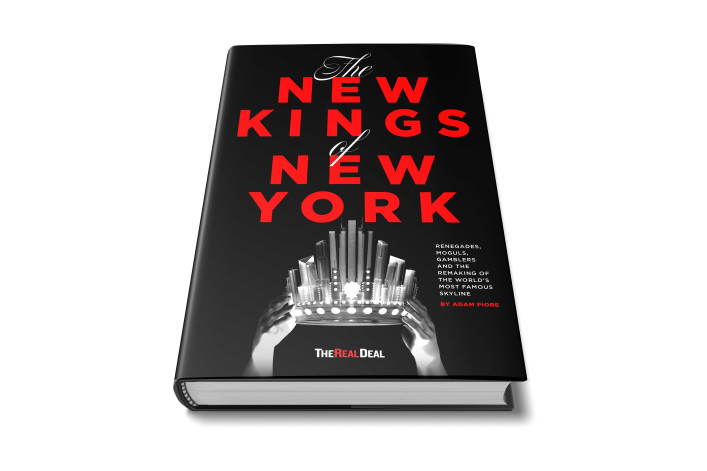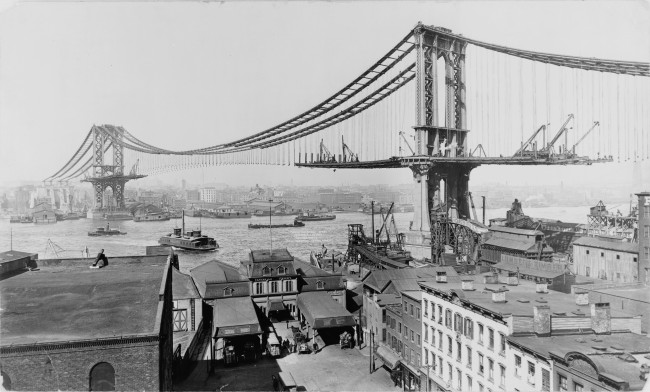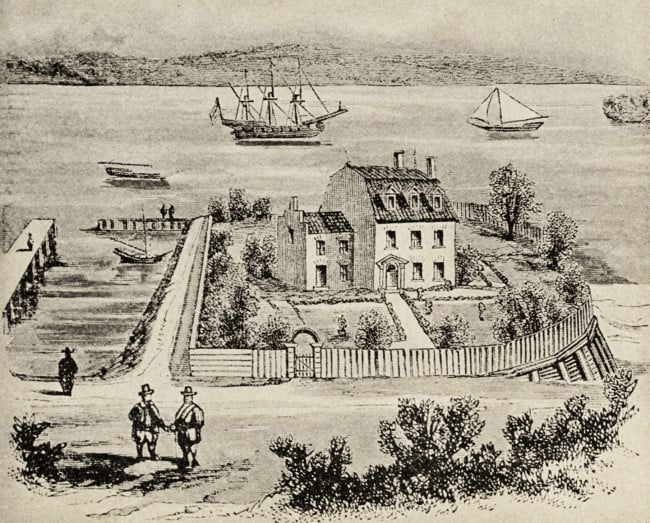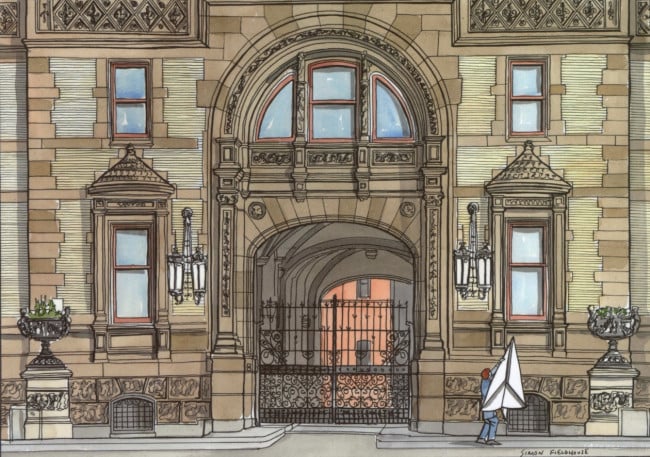‘The New Kings of New York’ pulls back the curtain on luxury real estate developers

Adam Piore's new book looks at the real estate personalities who transformed NYC into a luxury playground for the 1 percent.
As you can imagine, putting up a luxury residential building in New York City, one of the most complicated cities in the world for real estate, involves intense, behind-the-scenes deal-making. Now a new book pulls back the curtains on the real estate giants who put all the pieces together.
Writer Adam Piore’s new book, “The New Kings of New York: Renegades, Moguls, Gamblers and the Remaking of the World’s Most Famous Skyline,” is out today and a vice president of a NYC real estate private equity firm (who requested anonymity) says he’s looking forward to finding out “all the dirt” on “some of the biggest real estate deals ever made, anywhere.”
“When most developers say that they’re doing something good for the community when they buy up property and build, frankly, that’s b------t. I expect that reading the book will back me up on that. We’ll see,” he says.
He probably won’t be disappointed. It’s all in there. Piore loves a good story and knows how to tell one. As he writes in his book, “It’s a truism that every New Yorker enjoys a good real estate yarn—whether it’s about that friend who found a miraculous, rent-controlled one bedroom on the Upper West Side for $700 dollars a month or the Russian oligarch who shelled out $88 million dollars for a penthouse with Central Park views to house his college-aged daughter and hide his assets from his ex-wife.”
Piore’s book covers the highlights and low lights of New York City real estate, spanning the past three decades—a time he refers to as the Second Gilded Age. It’s a juicy tale with outsize characters, an exclusive posse of high rollers who amass fortunes, lose them, win them back again, and never, ever take “no” for an answer.
Piore’s energetic style brings his cast of characters to life. He introduces readers to his subjects’ outsized personalities and offers a rare, inside look at the complex and nail-biting deals they make. And what makes the book truly delicious are some of the inevitable Page Six-style tidbits that emerge.
A journalist who has been writing for The Real Deal for over a decade, Piore is also a former editor and correspondent for Newsweek, and has written features for Conde Nast Traveler, GQ, Discover, Mother Jones, Playboy, Scientific American, the Atavist, Business Week, and others. He is the author of “The Body Builders: Inside the Science of the Engineered Human.” That may sound miles away in subject matter from “Kings of New York,” but he says it really isn’t.
Many real estate stories, Piore says, “are about resilience.” And “Body Builders” is about the body’s resilience, of course. His “Kings” focuses on the resilience of the city and the men (yes, it’s primarily men) who build the skyline.
Piore tells us that he likes “to get inside the heads of his characters.” He spent a year researching and writing this latest book—doing exactly that.
Much of the book is concerned with Kent Swig, a developer who made a fortune, lost a fortune, and is now climbing back up the real estate ladder. Swig exemplifies the resilience that the writer admires. In the interest of full disclosure, it should be noted that just over a decade ago Swig bought the rent-stabilized building this writer lives in.
It’s a modest, six-story building from the 1920s, but it sits on some pretty prime Upper West Side real estate. Swig’s initial plan was to add the nine stories above the existing tenants and then market the added addition as luxury condos. After two years of organizing, the building’s tenants association defeated his plan, a classic David and Goliath story.
Brick Underground spoke to Piore about “Kings of New York” and what it took to make this real estate saga come to life.
The first thing I have to ask you is about Kent Swig. Why is he so prominent in your book?
Look at that guy’s resilience. Here’s someone who grew up in California with a silver spoon in his mouth, came to New York, married into a family of real estate royalty (the Macklowes), made a fortune then hit rock bottom.
I wondered what it must be like to be $2 billion in debt, divorced by your wife, sued by your ex-father-in-law, be in such bad shape that one of your lenders has to give you a credit card to buy groceries at Trader Joe’s, and then be able to climb out of the hole and get back in the game. What I got from talking to Swig, something I like to apply to my own life, is to remember that when the world is falling apart and everything in your life is in crisis, you respond, you don’t react. You wait for the emotion to pass before you do anything.
Are you a New Yorker?
I grew up outside of Boston. My parents, both academics, were native New Yorkers. For my mom there were only two real cities: New York and Paris. I visited New York City a lot in the ’70s and ’80s, went to school in California and then to Columbia University School of Journalism. My first job out was with the Bergen Record. I was young, ambitious, and cheap so before long they sent me to cover Congress during the Clinton administration.
It all began to seem boring. I wanted to travel, so I left my job, went to Southeast Asia and lived in Cambodia, where I freelanced. I interviewed mass murderers to see whether they were sorry for what they had done and talked to people recovering from genocide. I loved writing about people. I came back to New York and covered 9/11, then went to Iraq. Back in New York in 2006 and 2007 I wrote profiles of real estate moguls for The Real Deal. That’s when I learned how the city worked and about the real estate industry’s Horatio Alger stories.
Why did you write the book?
It’s fun to tell a story through its characters. Who wouldn’t want to know more about the kind of people who sit in a cubicle all day and get a call from someone who says “I need a billion dollars.” I try to get into the heads of the people on both sides of the call.
I worked on the book for a year. I wanted to understand the transformation of the city that I’d been coming to since I was a kid and the people who played a part in that transformation. I wanted to figure out how the city went from a bankrupt combat zone, from abandoned buildings and a burning Bronx, to one where people are willing to pay $200 million for an apartment.
I wanted to trace the arc that started in the ’90s, when people welcomed developers who promised to clean up the neighborhoods they were buying up. The excitement about developments in the High Line years, the whole Bloomberg-vision-of-the-city thing, had collapsed by the time Hudson Yards had its launch party. Neither Governor Cuomo nor Mayor de Blasio showed up.
I wanted to tell the story of how Kent Swig went from silver spoon to frozen credit cards, how Stephen Ross began with building affordable housing and ended up as the developer of Hudson Yards. I wanted to understand how capitalism, combined with politics and sociological factors, transformed the city that I consider the greatest on earth.
What are the most coveted residential addresses now?
These days, the ultimate proof of a person’s wealth is their address. This isn’t a new phenomenon—Fifth Avenue in the first gilded age was Millionaire’s Row but now we’ve got Billionaire’s Row in the second gilded age. When Sandy Weill bought his condo at 15 Central Park West, people thought $2,000 per square foot was crazy. Not too long after, a Russian oligarch bought it for his daughter for seven times as much.
The flavor of the month for the uber rich is an apartment on 57th Street—Steinway Tower, 432 Park Ave. and Central Park Tower, or one at 15 Hudson Yards.
As for the architecture on Billionaire’s Row: The Zeckendorfs and Stephen Ross appreciate good architecture but Gary Barnett, who built One57, isn’t interested in that. He wanted his super-tall to be built from the inside out. He wanted floor to ceiling windows; who cares what it looks like on the outside? His goal: To maximize the amount of money you can get for Central Park views.
Stephen Ross gave One57 a concise review: It’s an “ugly f-----g building.”
Were the kings of New York open to being interviewed?
Most were, but Harry Macklowe wouldn’t talk to me. I was on a train halfway to New York for an interview with him when I found out he had canceled. He respected my persistence but no interview. The Real Deal covered his divorce so that ended that.
But it was Rob Speyer who behaved most shamefully. He wouldn’t talk to me. He had been a journalist at the Daily News. I consider that a violation of the journalist’s code by not talking to me.
You profile developers but why not the lenders?
Lenders don’t want to be known. It’s not their role to be public. Quite the opposite. The developers are all salesmen. They need the buzz. Not the lenders.
What about the future?
New York City is always going to be a desirable place to live. One of the big questions now is, if people don’t go back to their offices, what will happen to the spaces they used to inhabit? The last time offices Downtown were vacated, the neighborhood was transformed. Will that happen again?
And affordable housing? How is that problem going to be solved? I have no answer for that.































